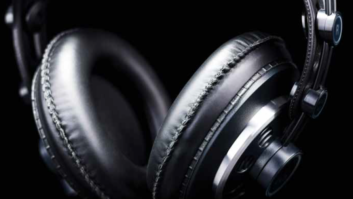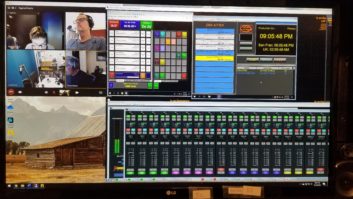
The coronavirus crisis ripped the fabric of the U.S. radio broadcast industry in March, as it did virtually all of the nation’s business sectors.
Vague uneasiness about public health and transmission in early March changed swiftly to sweeping action that reinvented radio’s daily life a week or two later. And the situation continued to evolve daily.
For many, it was the postponement (and eventual cancellation) of the April NAB Show, first announced March 11, that brought home reality: The 2020 spring convention season would be like no other.
This decision would have seemed controversial not long before, and it was still jarring on the day it was announced, given that the spring show hadn’t missed a year since 1945.
But within two more days President Trump was declaring that COVID-19 constituted a national emergency. The loss of a big convention, as dramatic as it was, became just another example of how radio’s business and technical landscape was altering at breathtaking speed.
RADIO AT ARM’S LENGTH
Virtualization became a trending topic as stations told employees they’d be working work from home for the foreseeable future. Engineers and IT staff had to move quickly to enable remote shows from living rooms of air talent without opening new cybersecurity gaps.
“The good news is that for many stations, remote access has been in place in one form or another,” consultant Gary Kline told Radio World. “Traffic can operate remotely using VPN or other specialized remote access software. The same goes for music scheduling and even the automation/playout system. Many stations have been utilizing some form of remote voice tracking for years,” he said.
The basic elements of operating a radio cluster are routine for most stations, he said, perhaps with help from the vendors of traffic, CRM or playout systems as well as the involvement of the station engineer or IT department/contractor.
The emotional impact of this transition, however, was another matter. For engineers, Facebook groups and social media sharing became even more important sources of information, ideas and comfort.
Meanwhile radio stations that remained “open” adopted vigorous procedures for cleaning and sharing equipment. Microphone windscreens became a hot commodity. Station visitors such as prize winners or clients were asked to stay away.
Broadcast equipment manufacturers said they were working to maintain product shipments from current inventory and to maintain remote support; but many sent team members home or, at least in one case, quietly laid off most of their staff. Many manufacturers also wondered whether their incoming component shipments would be maintained.
NAB’s PILOT innovation initiative cancelled an FM-band HD Radio field test that had been scheduled to start in March, involving Xperi and radio engineers from a number of NAB member groups.
The Society of Broadcast Engineers asked its chapter chairs to refrain from holding in-person meetings for at least two months. Instead, SBE encouraged them to “meet virtually through any capabilities you may have available to you,” according to an email shared by Chapter 1 Chair Paul Kaminski.
Numerous planned events like the annual convention of the New Jersey Broadcasters Association in June were cancelled.
College radio station managers were faced with deciding whether and how to function when their campuses shuttered or student populations mostly went home.
FEMA put out messaging about how the Integrated Public Alert Warning System may be used to inform, alert or warn the public, including EAS and WEA alerts. It encouraged questions via email to [email protected].
Manufacturers, law firms, trade publications and other service providers scheduled virtual conferences and events either to present the content they’d planned to share at the convention, or to help clients cope with their new business reality.
#WeAreGrateful
Radio leaders celebrated the medium’s role in disseminating information. The Centers for Disease Control and Prevention upped the number of radio PSAs airing specific to COVID-19 in target markets, including Seattle, San Francisco, New York, Los Angeles and Houston. NAB said the value of airtime donated to coronavirus PSAs in about a week was equivalent to $10 million of radio and TV ad spots.
Beasley Media Group rolled out a hashtag and PSA campaign, the #WeAreGrateful initiative, intended to thank “first responders, healthcare industry workers, retail employees, utility workers, transport drivers and others who are making a difference.”
Dashboard radios began displaying messages from RDS feeds like “Remember to wash your hands” and “We’re all in this together.”
But some in the industry lamented recent reductions in U.S. radio air staffs — such as the big cuts by iHeartMedia in January — and questioned radio’s ability now to provide true local programming during a time of crisis.
Some observers also speculate that the impact of changes on operations and workflows will be long-term. Given that stations only recently have been allowed to run without a main studio in each city of license, one school of thought holds that this sudden growth in the use of remote broadcasting could hasten the trend away from local physical studios.
Tell us about the impact on your own operation. Email [email protected].
To read the latest articles on this topic, see www.radioworld.com/tag/coronavirus.







